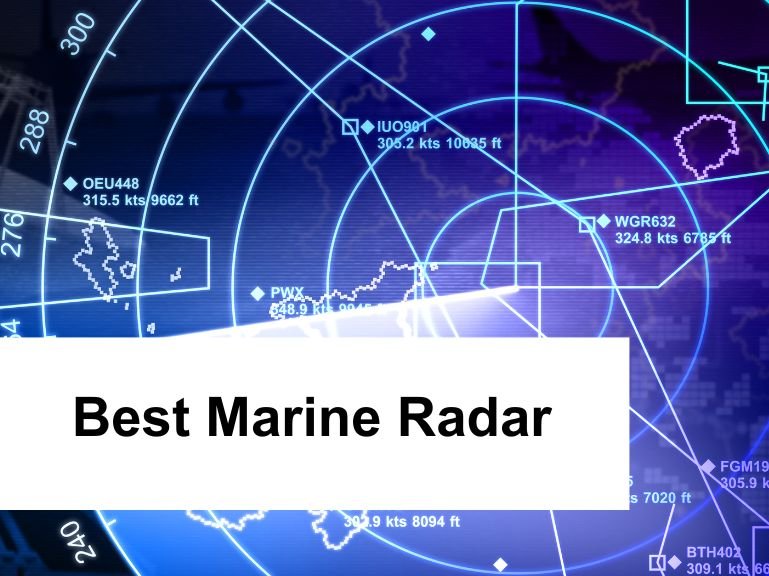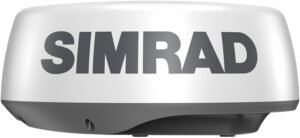Best Marine Radar: Navigating the Waters with Confidence
Marine radar, once a high-tech luxury reserved for larger vessels, has become an essential tool for boaters of all kinds. Whether you’re navigating foggy conditions, tracking nearby ships, or just ensuring safe passage, the right marine radar system is invaluable. 2023 has seen remarkable advancements in marine radar technology, making it more accessible and user-friendly than ever before.

Top Picks For Marine Radar Systems
Garmin GMR Fantom Marine Radar
Garmin’s GMR 18HD+ is a great blend of performance and price. It features a 36 nautical mile range and dynamic auto gain, ensuring clarity even in poor weather. Its compact size and ease of installation make it a versatile choice for various boat types.
Simrad Halo 20+ Marine Radar

The Simrad Halo 20+ is known for its fast operation and excellent collision avoidance capabilities. With a range of 36 nautical miles, it uses pulse compression technology and offers multiple modes for different boating scenarios. Its dual-range mode and MARPA target tracking make it a top contender in marine radar systems.
Raymarine RD418HD HD Color Radome
The Raymarine RD418HD stands out with its 48 nautical mile range and 4 kW power. This radome antenna, featuring plug-and-play compatibility, adapts to changing weather and environmental conditions, ensuring clarity at all times. Its multi-level target display and unique bird mode are especially useful for fishermen.
Raymarine Quantum 2
A premium choice, the Quantum 2 is known for its CHIRP pulse compression and Doppler collision avoidance technology. It highlights moving targets and offers a 24-nautical mile range, ideal for high-traffic areas. This unit is not only advanced but also user-friendly, a perfect blend of technology and convenience.
Furuno Defender
For those on a budget, the Furuno Defender offers reliable functionality at an affordable price. With a 24-nautical mile range and compatibility with iOS devices, it’s an excellent choice for smaller boats and casual sailors. Its robust construction and easy setup make it a favorite among budget-conscious boaters.
Key Features to Consider
When selecting a marine radar, consider the following crucial factors:
- Radar System Range: This determines how far your radar can effectively detect objects. For casual boating near shore, a limited range radar might suffice. Serious boaters exploring unfamiliar waters should opt for longer range radars.
- Power: Higher power radars cut through severe weather and fog better, but they also consume more energy. Balance power with your boat’s energy capabilities.
- Types of Radars: Choose between pulse and solid-state radars based on your specific needs. Pulse radars are reliable and time-tested, while solid-state radars offer better resolution and lower energy consumption.
- Beam Width: This affects the detail of the image your radar provides. Narrower beams offer more detail at the expense of potentially missing some objects.
- Compatibility: Ensure the radar system is compatible with your boat’s existing technology, like GPS or chart plotters.
Understanding Marine Radar Technology
Modern marine radars are more user-friendly than their predecessors. Auto-tuning makes operation straightforward, and the integration with chartplotters simplifies interpretation of radar imagery. The evolution from bulky, power-hungry units to compact, efficient models has made marine radar accessible to small boat operators as well.
Selecting the best marine radar involves understanding your boating habits, the type of boat you have, and the conditions you typically encounter. With the advancements in marine radar technology, there’s a system out there that’s perfect for your specific needs. Stay safe and navigate confidently, knowing you have the right technology on board.
Choosing the Right Marine Radar for Your Boat
When selecting a marine radar, it’s crucial to consider your specific boating needs:
Open Array vs. Radar Dome
- Open arrays are suitable for large vessels, offering the narrowest beam widths and longest ranges. They’re ideal for boats with radar arches or pilothouses.
- Radomes, on the other hand, are more suitable for smaller boats. They offer good resolution with a compact form, are safe around sails and halyards, and consume less power.
Power Output
- Power output impacts your radar’s effectiveness in different weather conditions. Higher power radars, like a 4 kW model, can have a range of up to 48 miles, advantageous for offshore use. Lower power units are adequate for inshore or inland applications.
Advanced Features in Modern Marine Radars
Combination Pulse and Solid State Radars
The latest radars blend pulse and solid-state technologies. For example, the Simrad Halo series offers maximum range and excellent resolution with minimal power usage.
Fantom™ Pulse Compression Radar by Garmin
Garmin’s Fantom™ Pulse Compression Radar utilizes Doppler effect technology, known as MotionScope™, to detect and highlight moving targets. It provides an impressive range of up to 72 nautical miles.
Practical Tips for Using Marine Radar
It’s not enough to simply have a marine radar; knowing how to use it effectively is crucial:
Familiarize Yourself: Regularly operate your radar, even in good weather, to become comfortable with its functionality and imagery.
Safety First: Always prioritize safety by understanding how to interpret the radar’s information accurately and making informed decisions based on its feedback.
FAQs About Marine Radars
Q: How far can marine radars detect? A: Marine radars vary in their detection range, which is influenced by factors like power output, antenna size, and environmental conditions. Generally, smaller leisure boat radars can detect objects from a few miles up to 24 miles, while larger, more powerful radars used on commercial ships can detect objects over 100 miles away. It’s important to note that the curvature of the Earth can limit radar range, and taller objects can be detected at greater distances.
Q: What is the difference between pulse and solid-state radars? A: Pulse radars, the traditional type, work by sending out a pulse of radio waves and then waiting for the echo to return to determine the distance to an object. They are known for their long-range capabilities. Solid-state radars, on the other hand, use continuous wave transmissions. They are more power-efficient, provide more detailed images at closer ranges, and have less radiation hazard. However, their range is typically shorter than pulse radars.
Q: Can I integrate my radar with my boat’s GPS system? A: Yes, many modern marine radars can be integrated with a boat’s GPS system. This integration allows for overlaying radar images on navigational charts, providing a more comprehensive view of your surroundings. It can enhance safety and situational awareness, especially in poor visibility conditions. The integration process typically involves connecting the radar and GPS system through a network like NMEA 2000 or via Wi-Fi, depending on the equipment’s compatibility.
Which Marine Fish Finders are Compatible with the Best Marine Radar for Navigating the Waters?
When it comes to navigating the waters, it’s important to have the best marine fish finders that are compatible with top-notch marine radar. Look for fish finders that have a strong reputation for accuracy and reliability, and that seamlessly integrate with the best marine radar systems for a comprehensive navigation experience.
Conclusion
Choosing and using the right marine radar can significantly enhance your boating experience, offering peace of mind and increased safety. Whether you’re a casual boater or an avid sailor, there’s a marine radar system tailored to your needs and preferences. Navigate with confidence, knowing that you’re well-equipped to handle whatever lies ahead on the waters.




